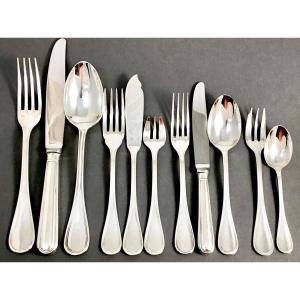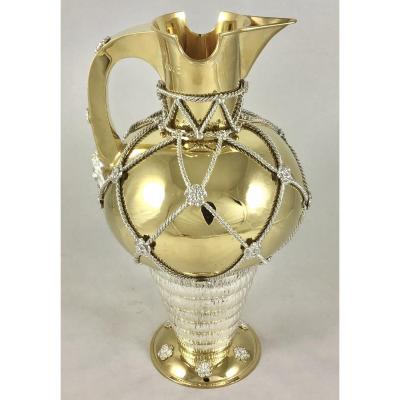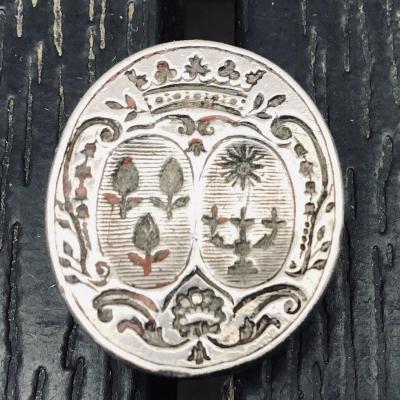The foot of the monstrance has the typical shape of the feet of Bruges ciboriums and monstrances from the beginning of the eighteenth century.
It is therefore more than likely that this piece is the work of a Bruges goldsmith.
The central medallion, the rays and the knot just below the rays are clearly from the 1820-1830 period.
The crown, the sumptuous base and the four cherubs presenting the instruments of the passion could indeed date from the beginning of the eighteenth century.
The cartridges in the foot and the three cartridges of the knot are all decorated with instruments of the passion of Christ: ladder, nails, believe, the thirty denarii, three dice, a spear, etc. Four angels in the round seem to fly around the central medallion, presenting three nails, crown of thorns, whip and hammer.
More than usual, the accent of the decorations is placed on the passion of Jesus, not on the Trinity or the bread and wine as is often the case.
The quality of the silversmith's work is exceptional. This monster weighs a very impressive 2700 grams and measures no less than 69 cm high.

















































 Le Magazine de PROANTIC
Le Magazine de PROANTIC TRÉSORS Magazine
TRÉSORS Magazine Rivista Artiquariato
Rivista Artiquariato